Summary Inflation Report Consumer Price Index (CPI) (2018=100) Agusan del Norte July 2024
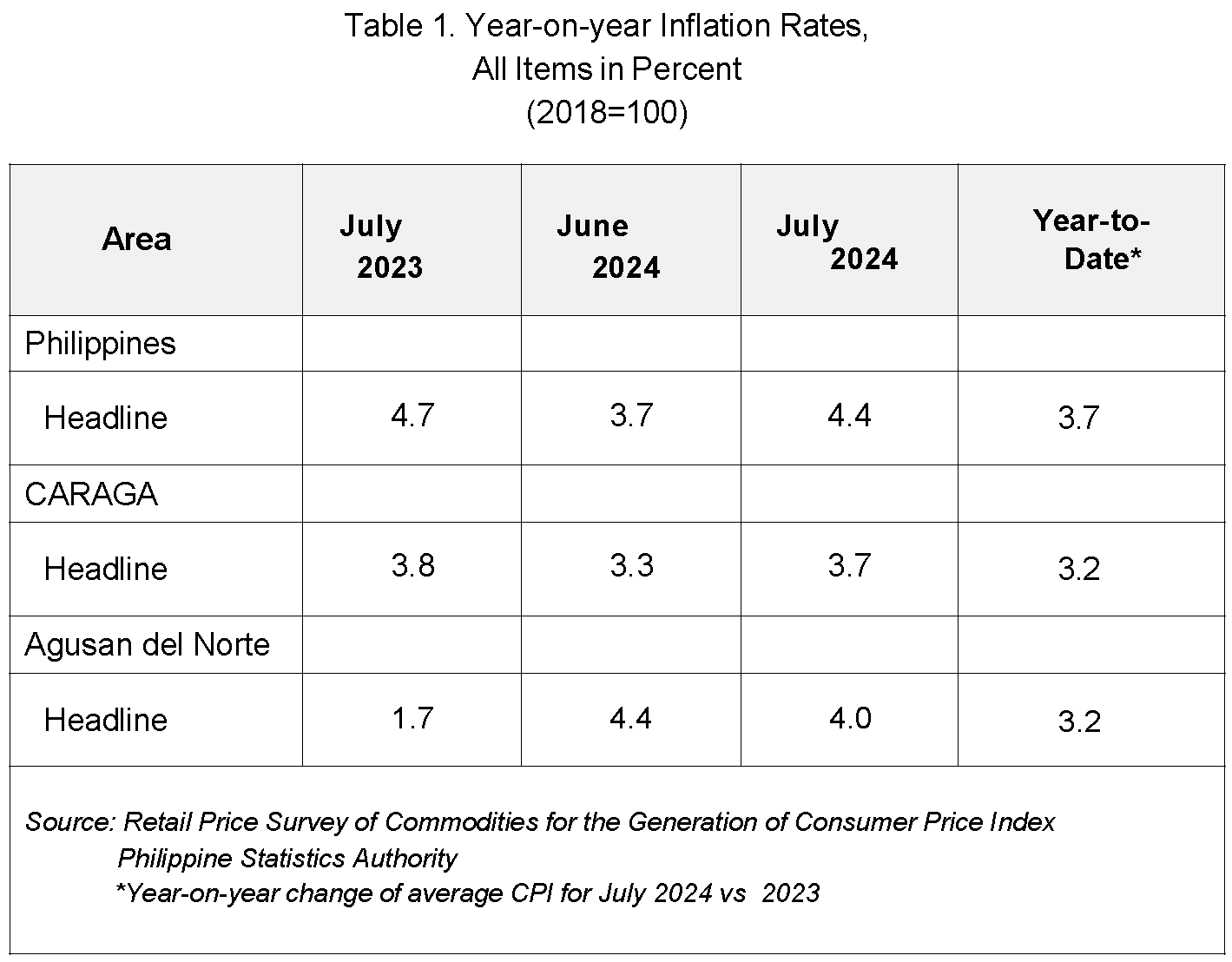
The headline inflation rate in Agusan del Norte slower at 4.0% in July 2024.
In July 2024, the inflation rate in Agusan del Norte province was recorded at 4.0 percent, showing a slight decrease from the previous month's inflation of 4.4 percent. This indicates a marginal decline of 0.4 percentage points compared to the inflation rate in June 2024, yet a significant increase of 2.3 percent when compared with the inflation rate reported in July 2023, which stood at 1.7 percent.
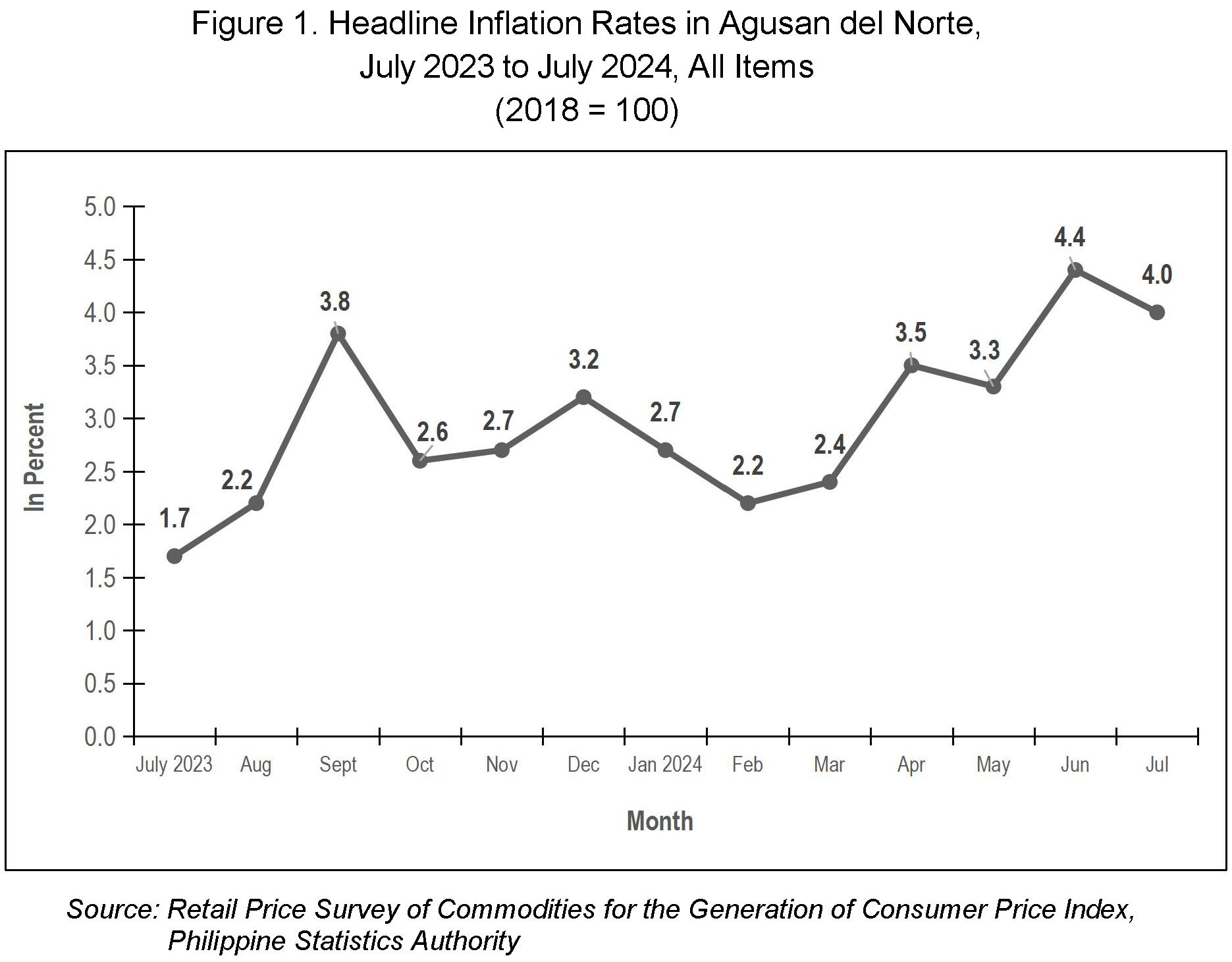
Major Contributors to the July 2024 Inflation
The following groups mainly contributed to this month’s inflation. These are:
1. Food and Non-Alcoholic Beverages; the inflation rate of this category slightly decreased to 7.3 percent from 7.4 percent in June 2024. This particular group made a substantial contribution, representing 90.5 percent of the total inflation for the month.
2. Transport; this category ranked second on the list, displaying an inflation rate of 1.1 percent, which is 0.7 percent lower than the 1.8 percent inflation rate observed in June 2024. This sector contributed approximately 2.7 percent to the overall inflation figure.
3. Personal Care, and Miscellaneous Goods and Services; this category secured the third position on the list, indicating a 2.2 percent inflation rate in July 2024, marking a 0.3 percent deceleration compared to the 2.5 percent inflation recorded in June 2024. This category accounted for approximately 2.4 percent of the inflation observed this month.
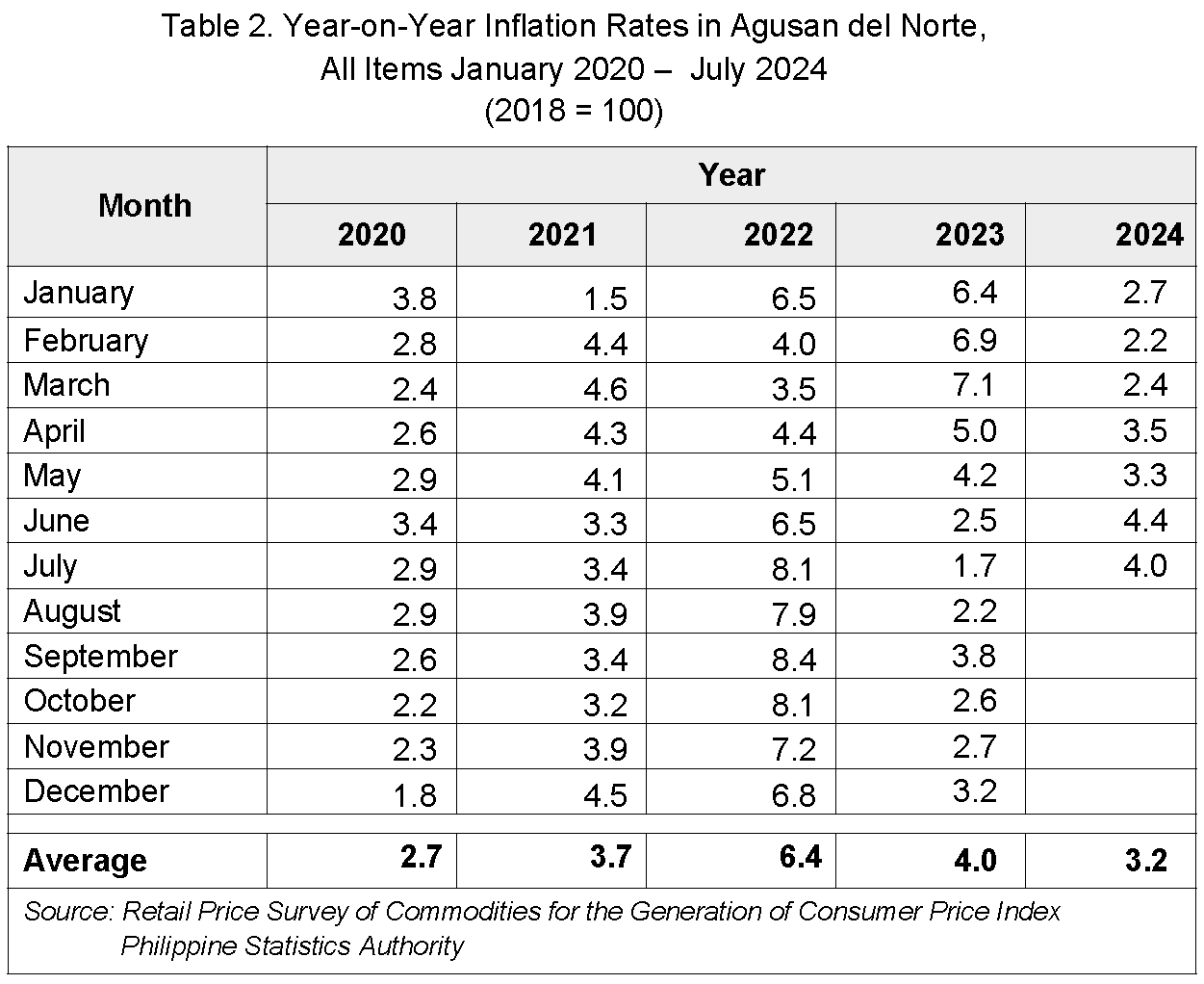
Major Contributor to the Year-on-Year Inflation Trend
Among the thirteen (13) groups of commodities, the following top three (3) groups have made a substantial contribution to the reduction in inflation. These are the following:
1) Housing, Water, Electricity, Gas, and Other Fuels; this group experienced a notable decline in prices, leading to a substantial decrease in inflation to -1.0 percent from 1.1 percent in June 2024. This category predominantly contributed to 72.0 percent of the reduced inflation rate.
2) Transport sector; this particular group ranked second in terms of its impact on the inflation trend, with its inflation rate decreasing from 1.8 percent in June 2024 to 1.1 percent this month. The decline in the prices of passenger transportation services was the primary factor behind this reduction. This industry contributed to approximately 13.4 percent of the overall inflation trend.
3) Food and Non-Alcoholic Beverages; this sector secured the third position, with its inflation rate decreasing to 7.3 percent in July 2024 from 7.4 percent in June 2024, contributing approximately 9.7 percent to the inflation trend.
Inflation Rate by Commodity Group
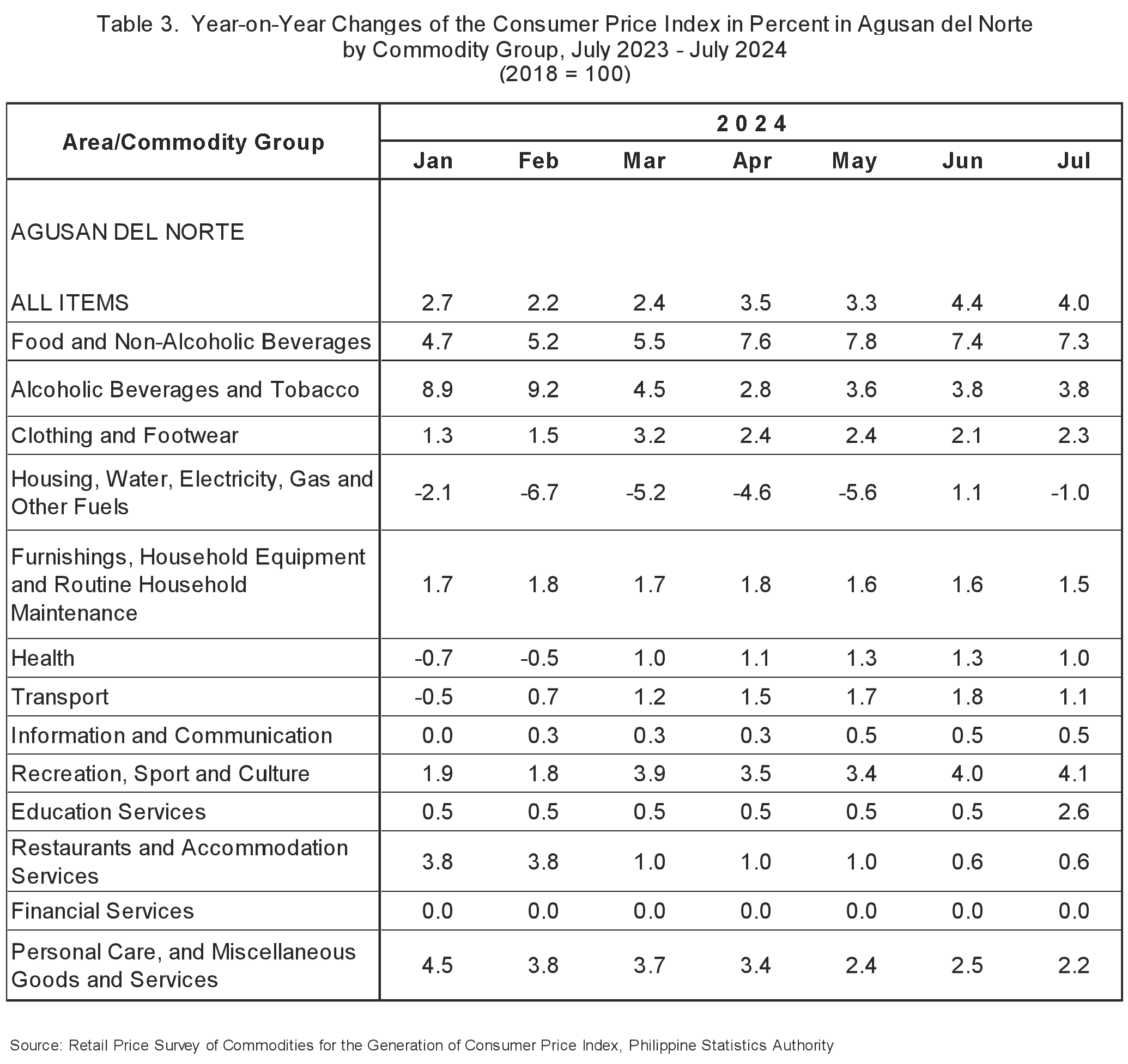
Food Alone Inflation
In July 2024, the province’ food inflation rate remained steady at 7.8 percent from June 2024. Compared to the inflation rate recorded the same month last year, this months inflation is elevated by 4.5 percentage points from its recorded inflation of 3.3 percent in July 2023. The primary contributors to the Food groups inflation are the following:
1) Cereals and cereal products; This food category significantly impacts the inflation rate within the food sector. It witnessed a reduction in inflation from 25.9 percent in June 2024 to 23.2 percent in July 2024. The decline in average prices of rice and corn contributed to this decrease, with inflation rates dropping to 30.9 percent and 6.2 percent from the previous month's figures of 34.5 percent and
9.7 percent, respectively. Cereals hold a substantial 99.0 percent share in food inflation.
2) Meat and other parts of slaughtered land animals; this food group secured the second position on the ranking. It witnessed a significant upsurge in inflation in July 2024, surging to 2.7 percent from the mere 0.2 percent recorded in June of the same year. The escalation in prices of fresh chicken played a pivotal role in driving up inflation within this category. Additionally, this particular food category represented a noteworthy 4.5 percent share of the overall food inflation.
3) Vegetables, tubers, plantains, cooking bananas, and pulses were ranked third on the list, experiencing a notable inflation surge of 5.7 percent this month, a stark contrast to the -6.7 percent deflation noted in the previous month. The escalation in prices of certain vegetables, particularly tomatoes, significantly contributed to the heightened inflation within this food category. This group made a substantial impact of 3.9 percent to the overall food inflation for July 2024.
4) Milk, along with other dairy products and eggs, ranked fourth on the list, exhibiting a notable increase in the inflation rate, rising to 3.8 percent this month from 2.9 percent in June 2024. The escalation in the average prices of eggs primarily drove the inflation surge in this particular food category. This group of food items contributes 3.5 percent to the overall food inflation for the current month.
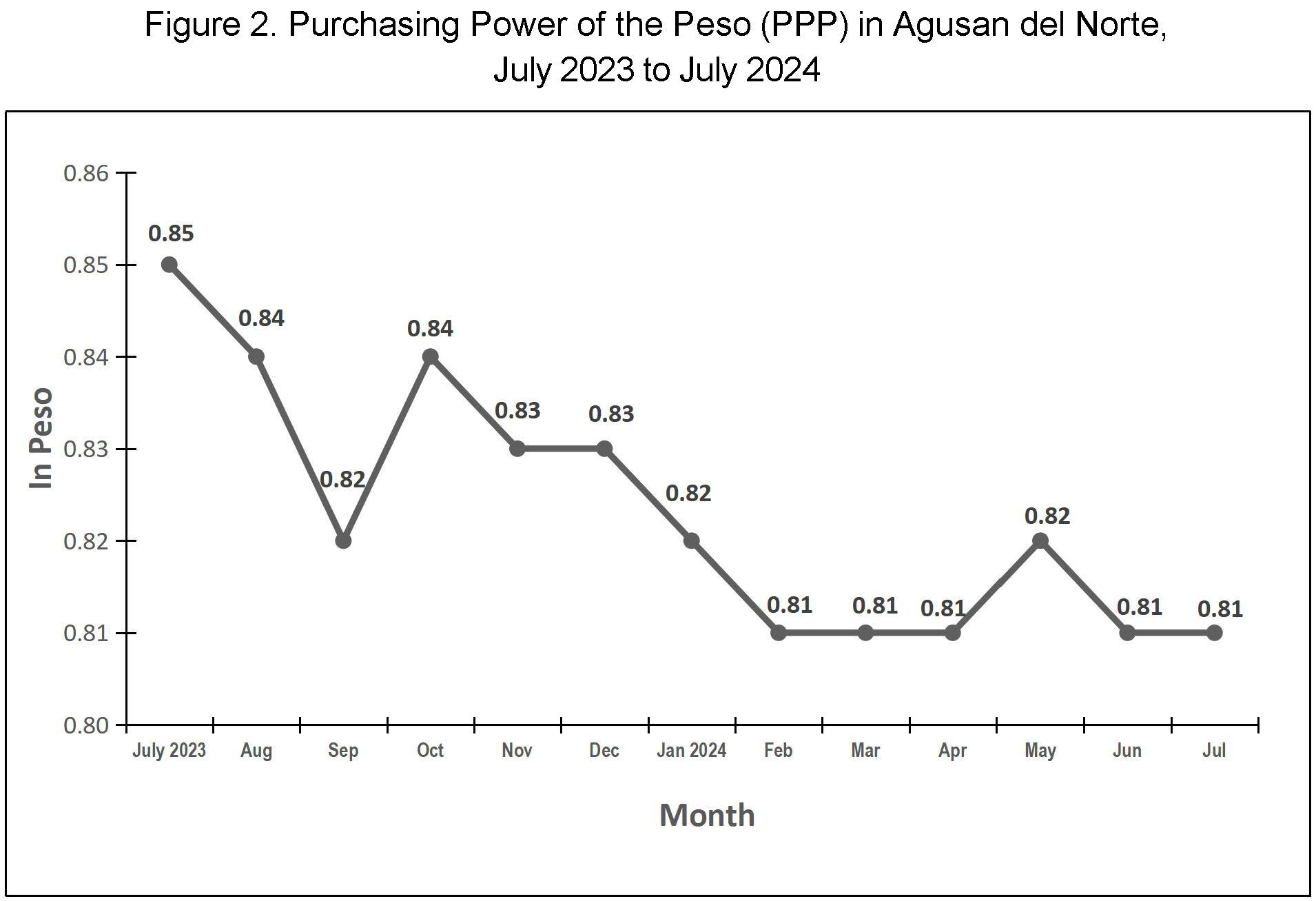
The Purchasing Power of the Peso (PPP) in Agusan del Norte has remained constant at Php 0.81 since June 2024. This suggests that the currency's value has not experienced substantial fluctuations in relation to the prices of goods and services in the province. It is crucial to understand that PPP serves as an indicator of the currency's ability to purchase actual goods and services, factoring in inflation and exchange rate variations.
TECHNICAL NOTES
The Philippine Statistics Authority generates and announces the monthly Consumer Price Index (CPI) based on the nationwide survey of prices for a given basket of goods and services. Two important indicators, the inflation rate and purchasing power of the peso (PPP), are derived from the CPI which are important in monitoring price stability and the value of the country’s currency.
The Consumer Price Index (CPI) is an indicator of the change in the average retail prices of a fixed basket of goods and services commonly purchased by households relative to a base year. It shows how much on the average, prices of goods and services have increased or decreased from a particular reference period known as base year.
Inflation Rate refers to the rate of change in the average prices of goods and services typically purchased by consumers. It is interpreted in terms of declining purchasing power of money.
Disinflation refers to a situation where the general level of prices is increasing but at a decreasing rate.
Deflation refers to a situation where the general level of prices is falling and the rate is below zero percent.
The Purchasing Power of the Peso (PPP) indicates the value of the peso in the period under review as compared to the value of the peso in the base period. It is computed as the reciprocal of the CPI for the period under review multiplied by 100.
Statistical Table refers to the statistical data presenting a reference table for the CPI, and Inflation Rate of each commodity groups and food items that are used for attachments.
Approved by:
(Sgd.) REYNELO S. MAGNO
Chief Statistical Specialist, PSO – Agusan del Norte
Telephone number: (085) 817-3193/
Telefax No.: (085) 225 – 2097
Email address: agusandelnorte@psa.gov.ph

